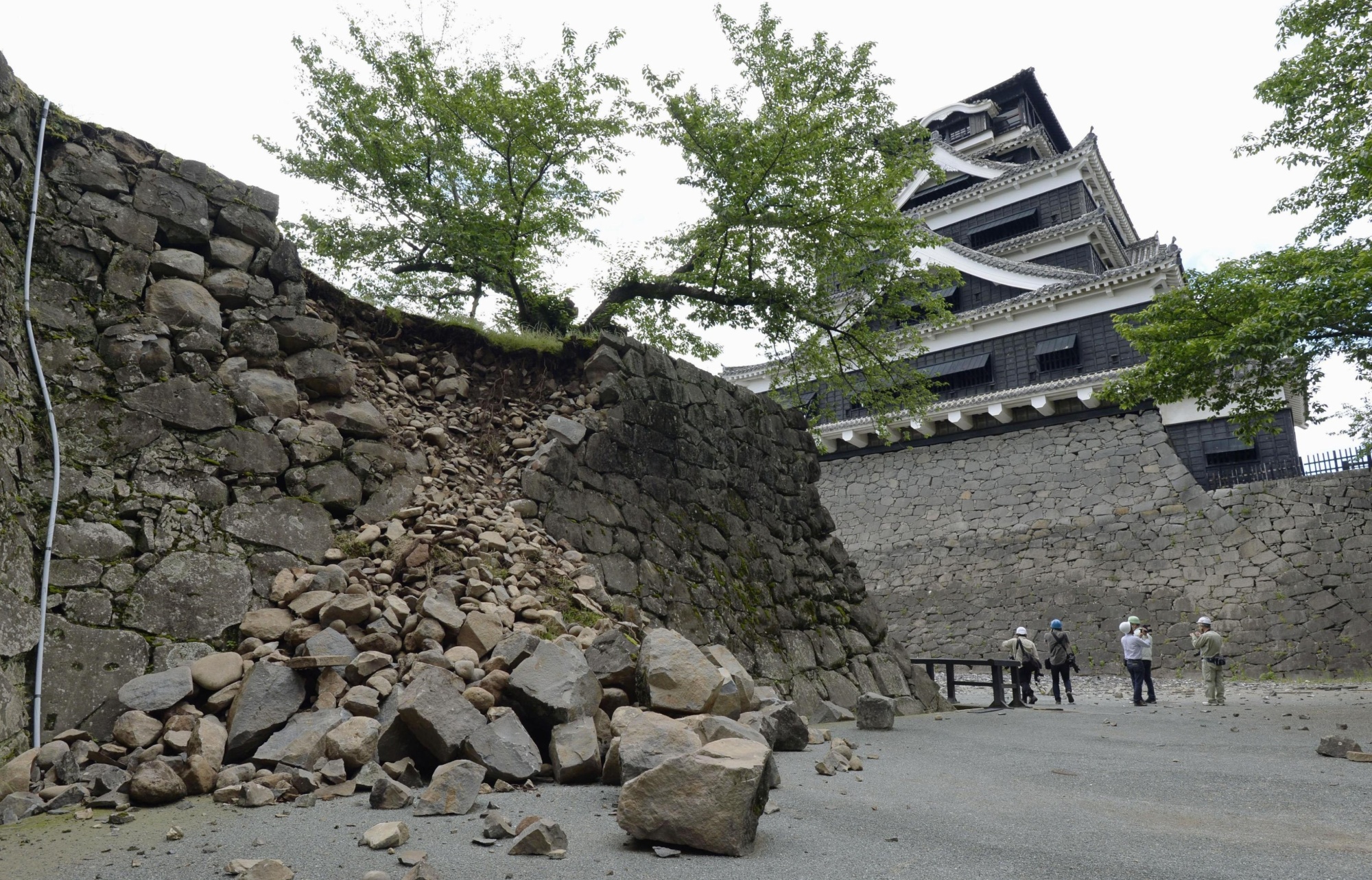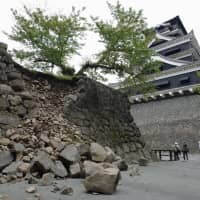Fujitsu Ltd. says it is developing an image-sensing technology system that will greatly speed up the restoration of stone walls on quake-hit castles and other cultural assets.
With the technology, which the electronics company aims to put into practical use by the end of next March, the original locations of stone fragments that have fallen from walls can be determined by analyzing the shape and surface of the stones.
The company also expects it may be used for restoration projects on historic structures outside Japan, such as the pyramids in Egypt.
Fujitsu's priority at the moment is to use the system to restore Kumamoto Castle, which is undergoing extensive repairs after two powerful earthquakes jolted central Kyushu in April 2016.
Full restoration of the castle, built in 1607, is expected to take 20 years, with 30,000 stones needed to be restored back into the structure's famous stone walls.
Through conventional methods, a stonemason would only be able to specify the locations of several dislodged stones a day.
But in a field test last year, it was determined the Fujitsu system could locate the proper placements of 101 to 123 stones per day.
The technology may see strong demand in the country, which is plagued by earthquakes and other natural disasters. As castles are often important tourist attractions, residents in areas hit by natural disasters often call for the quick restoration of such sites.
"There are many inquiries about this kind of system," a Fujitsu official said.
Stone walls at Komine Castle in Fukushima Prefecture also collapsed in the massive earthquake that hit northeastern Japan in March 2011. Last year's torrential rain in western Japan also damaged the walls of another castle in Kagawa Prefecture.




